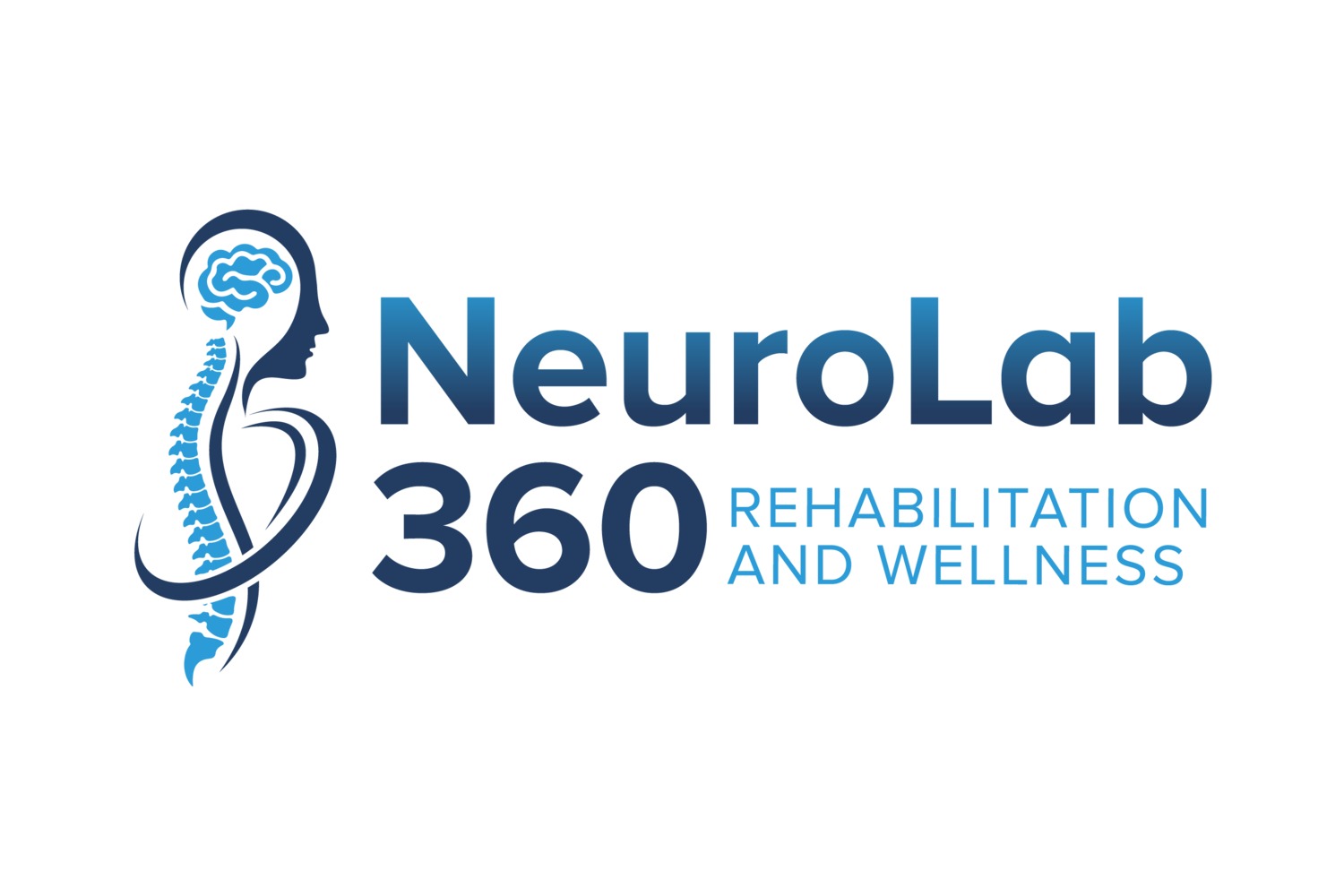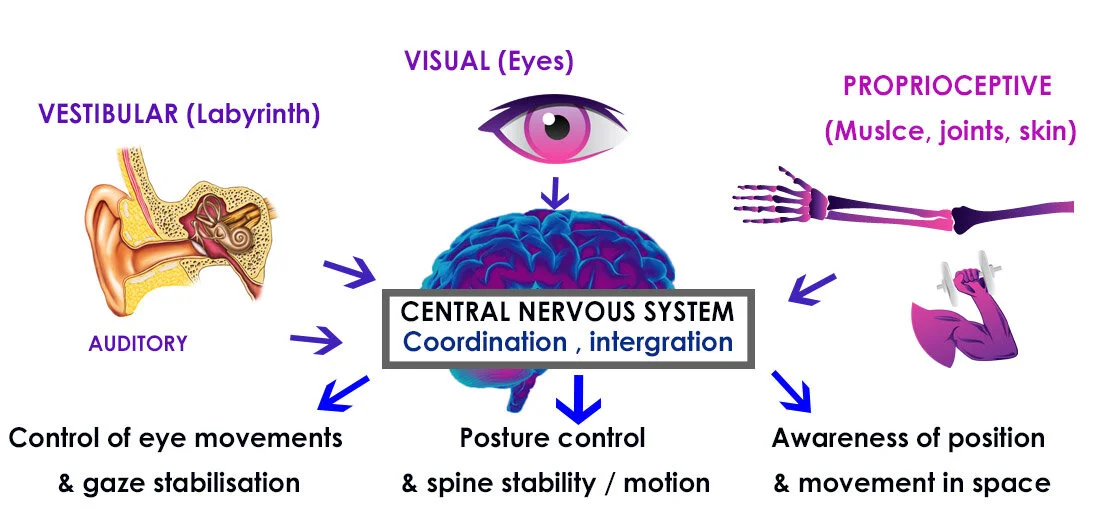Balance
Balance is our ability to maintain our center of mass within our base of support. Sounds technical, but realistically we just have to maintain the heaviest part of our body (usually the hip area) around the surface that we are supported on. If we are standing straight, this is our feet on the ground, if we are sitting then this is the sit bones on our bottom and our feet on the ground. As we move around, our brain fine tunes and changes our muscle activation to keep us in an upright position. We don’t have to be perfectly aligned over our base of support because our body has the ability to maintain us upright within a “limit of stability”. This means we have a small circle around us that we can move without falling over or activating a balance reaction. Each person’s limit is different and as we age that limit decreases, unless we work on our balance! If we move outside of our base of support then, to prevent a fall, our body elicits a balance reaction and the type of reaction depends on the amplitude of how much we are falling. We develop and integrate strategies as a child that allow us to maintain our balance when something or someone tries to knock us over.
This is just a brief overview of how our body works to maintain our balance but we will be going over each of these in more detail in follow up posts.
Falls, the big scary word that all your medical professionals are trying to avoid, and for good reason. The statistics about falls are changing constantly and we will do a deep dive post about falls in the future but here are some of the quick bullet points when thinking about falls.
Between the ages of 65-69, 13% of adults report difficulties with their balance which increases to 46% in those older than 85
In those over 65, it is reported than 28% of adults experience 1 fall/year. This doesn’t include all the falls that go unreported
The CDC data indicates that 1 fall doubles your chances of having a second fall
More than 800,000 individuals are hospitalized each year due to a fall, with the most common injuries being hip fractures and traumatic brain injuries
In adults over 65, falls account for 55.8% of accidental deaths
While these statistics may seem daunting there are many things that can be done to help decrease your risk of falling or decrease your risk of a fall with injury! In this post we will give a few suggestions with follow up posts providing more education on how to prevent a fall.
There are 3 main systems within our bodies that affect balance. Each of these systems is important independently but they also communicate information to our brains which causes them to be reliant on all systems functioning properly. The 3 systems are:
Vestibular: this system is located in our inner ear and is very sensitive to changes of position of your head. This system tells your brain if your head is accelerating or deceleration, rotating or moving up and down. This system works very closely with your visual system and when impaired can cause mixed messages in your brain about where your body is. This can lead to dizziness and disorientation that can significantly affect your balance.
Proprioception: this system sends signals from your body to your brain about the position of a body part. For example, if you close your eyes and then move your hand above your head, your brain knows that you have moved the position of your arm, even though you can’t see it. As we age, this system becomes impaired and has a large impact on how we respond to challenging balance situations.
Vision: this is your eyes but also the areas of your brain that interpret what you are seeing. According to research, this is the number one system that impacts fall risk in older adults and becomes impaired more significantly in the sixth decade of life.
Besides changes in our normal physiology over time, other factors can affect our balance. These can include, but are not limited to:
Medications: especially those that affect our heart and nervous system can cause fluctuating symptoms which may include dizziness. If you have a sudden change in dizziness with a recent change in medication, make sure to discuss this with your doctor. Additionally, people who are diabetic or pre-diabetic may be more likely to have balance issues when they are experiencing high or low blood sugars and should be monitored carefully with medications and eating habits.
Lifestyle Factors: not getting enough sleep, not getting enough hydration, being in a bad mood can all affect your balance. We know that sleep not only affects how quickly our body reacts to a loss of balance but can also affect our decision making which can increase the risk of falls. Not being hydrated enough can cause us to have instances of low blood pressure, especially with changing positions that can also lead to falls.
Environment: a changing environment can be the biggest “trip” hazard to individuals with and without balance concerns. Being in a new environment, distracted while moving around or in a poorly lit room can all cause an increased risk of falling. Our balance strategies also need to change depending on the surfaces we are walking on (grass versus cement versus ice) as well as obstacles we may encounter. This is why it is so important to assess and challenge our balance with a well trained professional to help with these concerns. Finally, our home environment can even be a trip hazard to us and there are many simple modifications that can be made to improve the safety within the home. These will be discussed in detail in our next post on “Home Safety and Fall Prevention”.
The most important thing to remember from this post is that you have the power to decrease your risk of falls and improve your balance and here at NeuroLab 360 we want you to feel empowered to do just that! We have weekly Saturday classes that focus on balance, strength, endurance and conditioning to help get you moving in a safe way. As always, feel free to reach out to us if you have any questions or concerns with your balance. September is Falls Prevention Month, keep an eye out for some new classes and check out our OnDemand membership for balance specific exercise videos!
Facts about falls. CDC. Accessed August 2, 21. https://www.cdc.gov/falls/facts.html
Osoba M, Rao A, Agrawal S, Lalwani A. Balance and gait in the elderly: a contemporary review. Laryngoscope Investig Otolaryngol. 2019 Feb; 4(1): 143–153.
Geyer RL, Thompson T. Matter of Balance Classes Through Physical Therapist Fall Risk Assessment. Journal of Trauma Nursing. 2021;28(3):173-178.
Patel M, Mukhi S, Jhala M. Effectiveness of Combined Balance and Step Training versus Task-Oriented Exercises with Sensory Input on Balance in Older Adults - A Comparative Study. Indian Journal of Physiotherapy & Occupational Therapy. 2020;14(4):73-78. doi:10.37506/ijpot.v14i4.11302.



